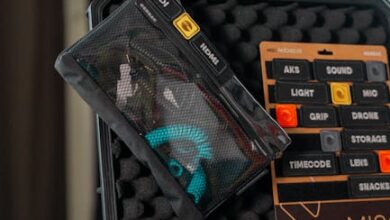Why Are Car Software Updates Still So Bad?

Why Are Car Software Updates Still So Bad?
Estimated Reading Time: 8 minutes
- Car software updates are often frustrating due to inconsistent experiences, buggy rollouts, and lack of clarity, despite the promise of evolving vehicles.
- Technical hurdles include complex multi-supplier software architectures, legacy systems not built for frequent OTA updates, stringent safety testing requirements, and critical cybersecurity concerns.
- Business challenges like fragmented supply chains and traditional dealership service models also contribute to the slow and difficult adoption of seamless over-the-air (OTA) updates.
- Drivers frequently face issues such as slow downloads, extended downtimes, and system failures, sometimes requiring dealership visits for simple fixes.
- For improvement, the automotive industry needs modular software design, enhanced connectivity, robust fallback systems, clearer communication, and greater standardization.
In an era where our smartphones, laptops, and smart home devices seamlessly update in the background, the automotive industry often feels like it’s stuck in reverse. We’ve been promised a future where our vehicles evolve, gain new features, and even improve performance with a simple over-the-air (OTA) software download. Yet, for many drivers, car software updates remain a source of significant frustration, often leading to bricked systems, lengthy downtimes, or even mandatory dealership visits.
The vision is compelling: a car that gets better with age, adapting to new technologies and user needs without ever leaving your driveway. The reality, however, is a patchwork of inconsistent experiences, buggy rollouts, and a general lack of clarity. What exactly is going wrong?
The Promise vs. The Pain: What Went Wrong?
The concept of OTA updates is revolutionary for the automotive sector. Imagine unlocking a new level of autonomous driving, enhancing your infotainment system with the latest apps, or boosting your vehicle’s efficiency, all with the tap of a screen. For manufacturers, the benefits are equally significant: reducing recall costs, streamlining maintenance, and fostering a continuous relationship with the customer.
Indeed, “Over-the-air upgrades can not only transform your ride, they can help carmakers slash costs. Here’s why they’re still miles away from being seamless.” The potential to remotely fix software bugs, introduce new features, and even prevent costly physical recalls offers a win-win scenario. So, why do we still hear horror stories of updates taking hours, failing repeatedly, or requiring a trip to the service center just to get a basic bug fix?
The pain points for consumers are numerous. Downloads can be agonizingly slow, often requiring a stable Wi-Fi connection that isn’t always available in a garage. The update process itself can lock you out of your car for extended periods, turning a quick fix into an all-day ordeal. And when things go wrong, the consequences can range from minor annoyances to rendering your vehicle inoperable, creating a profound sense of distrust in a system designed to improve convenience.
Unpacking the Technical & Business Hurdles
The gap between the promise and the reality of car software updates isn’t due to a lack of ambition. It stems from a confluence of deep-seated technical complexities and ingrained business challenges unique to the automotive world.
Complexity of Automotive Software Architecture
Modern vehicles are not just mechanical marvels; they are rolling supercomputers. They contain dozens, sometimes hundreds, of Electronic Control Units (ECUs) managing everything from engine performance and braking to airbags and infotainment. These systems often come from different suppliers, run on various operating systems, and communicate via a complex network. Updating one component without adversely affecting another is an intricate dance, far more challenging than updating a single smartphone OS.
Legacy Systems and Connectivity
Many existing vehicles were designed before ubiquitous connectivity was a primary consideration. Their underlying architecture wasn’t built for frequent, large-scale OTA updates. Integrating modern software update capabilities into these older platforms can be like trying to fit a supercomputer into a vintage radio. Even newer models might struggle with inconsistent cellular data connections or slow Wi-Fi, making robust downloads unreliable.
Rigorous Testing and Validation
Unlike consumer electronics, software in a car directly impacts safety. A bug in an infotainment system is annoying; a bug in the braking system is catastrophic. This necessitates an incredibly stringent testing and validation process. Every update must be meticulously tested across countless hardware configurations and driving scenarios before deployment, a process that is both time-consuming and expensive. This extended testing cycle often delays bug fixes and feature rollouts.
Cybersecurity Concerns
Opening up a car to OTA updates also opens it up to potential cyber threats. Manufacturers must invest heavily in secure communication protocols, robust encryption, and continuous monitoring to prevent malicious attacks that could compromise vehicle safety or personal data. This layer of security adds another significant engineering challenge and cost.
Fragmented Supply Chain and Manufacturer Silos
The automotive industry relies on a vast network of suppliers. Different companies might provide the engine control unit, the transmission control unit, and the infotainment system. Each might have its own software and update protocols. Harmonizing these disparate systems into a single, seamless OTA update strategy requires unprecedented collaboration and standardization across the entire supply chain, which is often difficult to achieve.
Business Models and Dealership Relationships
For some traditional carmakers, dealership service departments represent a significant revenue stream. OTA updates that fix issues remotely could potentially reduce the need for certain service visits, impacting these established business models. While this isn’t the primary reason for poor updates, it can influence the speed and scope of OTA adoption.
Real-World Frustrations and Actionable Steps
The consequences of these challenges manifest as real headaches for drivers. Imagine this scenario:
Real-World Example: The Infotainment Interruption
Sarah bought a new SUV, excited by its advanced infotainment system. One evening, she receives a notification for a critical bug fix that promises to resolve persistent Bluetooth issues. The update requires her car to be parked and connected to Wi-Fi for “at least 90 minutes.” She starts the process before bed, only to wake up to a failed update message and a completely black infotainment screen. Her car is still drivable, but without navigation, music, or phone connectivity, her morning commute is significantly disrupted. After several failed attempts at home, she’s forced to schedule a dealership appointment, taking a valuable half-day off work for something that should have been a simple, remote fix.
This experience, or variations of it, is far too common. While carmakers work to improve, what can you, as a driver, do?
3 Actionable Steps for Car Owners:
- Stay Informed and Plan Ahead: Before initiating any major software update, read user forums, manufacturer advisories, and tech news related to your specific vehicle model. Understand the expected duration, requirements (e.g., battery charge, Wi-Fi), and any reported issues. Plan to perform updates when you won’t need your car for several hours, ideally overnight, and ensure you have a strong, stable Wi-Fi connection.
- Document Everything: If you encounter issues during an update – slow downloads, error messages, or functionality problems afterward – take screenshots or photos, note down exact error codes, and record the date and time. This documentation will be invaluable if you need to contact customer support or visit a dealership for assistance.
- Consider Your Connectivity: Relying solely on cellular data for large updates can be costly and unreliable. Whenever possible, connect your vehicle to a robust home or office Wi-Fi network. If consistent connectivity is an issue, ask your dealership if they offer assistance with updates or dedicated fast-download zones.
What Carmakers Should Be Doing:
The path forward requires significant investment and a shift in mindset for the automotive industry. This includes:
- Modular Software Design: Breaking down software into smaller, independent modules allows for quicker, less risky updates to specific components.
- Enhanced Connectivity: Integrating faster, more reliable cellular modems and improving Wi-Fi capabilities directly into vehicles.
- Robust Fallback Systems: Ensuring that failed updates don’t brick the car, but rather revert to a stable previous version or provide clear recovery options.
- Clearer Communication: Providing transparent information about update size, duration, new features, and potential risks in an easily understandable format.
- Standardization and Collaboration: Working across the industry to develop common standards for OTA updates, easing integration challenges across different suppliers.
Conclusion
The promise of seamlessly updated cars is a powerful one, offering unparalleled convenience, enhanced safety, and continuous improvement for vehicle owners. While the technical and business complexities of achieving this are immense, the automotive industry is slowly but surely moving towards this future. The current state of car software updates highlights a critical area for improvement, demanding greater investment in robust software architectures, stronger cybersecurity, and a user-centric approach to deployment.
As technology continues to advance, we expect our vehicles to keep pace. For car manufacturers, perfecting OTA updates isn’t just about adding new features; it’s about building trust, enhancing brand loyalty, and future-proofing their products in an increasingly digital world. The journey to truly seamless car software updates is long, but it’s a destination worth reaching for both drivers and the industry.
Share Your Car Update Experiences in the Comments!
Frequently Asked Questions (FAQs)
Q: Why are car software updates so difficult compared to smartphone updates?
A: Car software is vastly more complex, involving dozens to hundreds of Electronic Control Units (ECUs) from different suppliers, all impacting critical safety systems. This requires rigorous testing, robust cybersecurity, and integration across a fragmented supply chain, unlike a single smartphone OS.
Q: What are the main technical challenges for over-the-air (OTA) car updates?
A: Key technical challenges include the highly complex, fragmented software architecture of modern vehicles, integrating updates into older “legacy” systems, extremely rigorous safety testing and validation requirements, and maintaining robust cybersecurity against potential threats.
Q: How do business models affect the speed of car software updates?
A: The automotive industry’s traditional supply chain involves numerous independent suppliers, each with their own software. Harmonizing these for seamless OTA updates is difficult. Additionally, dealership service departments, a significant revenue source for some manufacturers, could see reduced visits if remote fixes become common, potentially influencing adoption.
Q: What can car owners do to prepare for or troubleshoot software updates?
A: Car owners should stay informed about specific update requirements, plan to perform updates when the car won’t be needed for several hours (ideally overnight), ensure a strong Wi-Fi connection, and document any issues with screenshots or error codes for support.
Q: What improvements are needed for better car software updates?
A: Carmakers need to adopt modular software design, integrate faster and more reliable connectivity, implement robust fallback systems for failed updates, provide clearer communication to users, and collaborate on industry-wide standardization for OTA processes.





